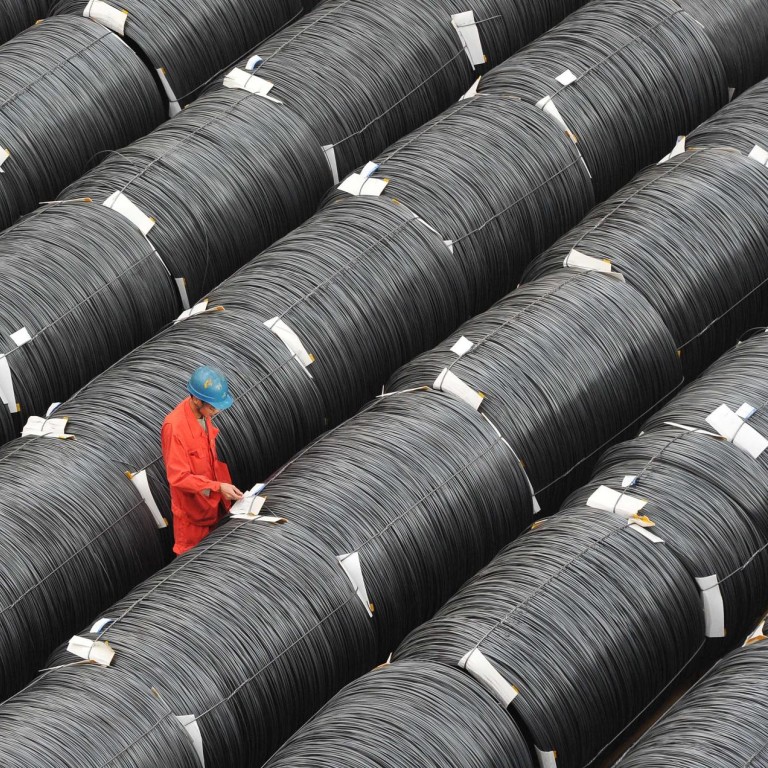
Commodity financing exposure in Asia-Pacific hits banks hard
ANZ and StanChart among the hardest hit as slump in crude oil and copper prices impacts Asia banks with loans backed by commodities
Sinking commodity prices have cast a shadow over asset quality in banks as at least US$23 billion of loan commitments in eight banks were backed by commodity plays in the Asia-Pacific region, data showed.
Commodity prices have taken a beating, with crude values dropping to a 51/2 year low due to a glut in supply and copper diving more than 20 per cent over the same period, as a slowing economy in top commodity consumer China affected prices of iron and base metals among others.
Banks with the biggest exposure to commodities financing are ANZ, Bank of Tokyo-Mitsubishi UFJ, Bank of China, Standard Chartered, Sumitomo Mitsui Banking Corp, HSBC, State Bank of India and DBS, according to the data from Thomson Reuters. The commodity plays are up from the US$21 billion seen in 2013.
Among the eight banks, ANZ had the biggest exposure of US$3.38 billion in loans to commodity plays. Bank of China's was US$2.8 billion, DBS had US$2.77 billion while Standard Chartered had US$2.1 billion in exposure last year.
Standard Chartered is a glaring example, with analysts growing increasingly concerned about the asset quality of the lender's loan exposure to commodity-related firms. Credit Suisse said in a recent report that Standard Chartered's US$61 billion global commodities exposure may require additional provisioning.
"In an adverse scenario, Standard Chartered would need US$2.6 billion of provisions and US$24 billion of risk-weighted asset increases as the riskiest of the commodities portfolio is re-assessed, resulting in an additional capital demand of US$4.4 billion in financial year 2015, just to maintain the base-case capital ratio," said Carla Antunes-Silva, one of the analysts who wrote the report.
According to Credit Suisse, among Standard Chartered's US$61 billion commodity exposure, US$32.6 billion is direct exposure to commodity traders with a further US$28.1 billion of exposure to energy, agriculture, metals and mining firms. This is in comparison to the bank's total assets of US$690 billion and shareholder funds of US$48.3 billion in the first half of 2014.
"We believe the last two years of de-rating have been driven largely by weaker revenue, and that the asset quality deteriorating leg is now setting in," said Antunes-Silva.
Standard Chartered stunned investors in August last year with a 20 per cent tumble in first half pre-tax profits. Ratings agency Standard & Poor's cut its credit rating on the bank for the first time in 20 years in response and said the resulting A-rating had a negative outlook - a signal that another downgrade could come.
Chief executive Peter Sands promised a better performance in the second half of the year.
Analysts expect full year earnings per share - due to be revealed in early March - to fall 17.3 per cent versus 2013, according to Bloomberg consensus estimates. Some 25 of the 38 analysts who cover the bank rate it a hold or a sell, with 13 ranking it as a buy.
Standard Chartered was exposed to a commodities financing fraud uncovered in Qingdao last year. It sued the owner of the metals trading firm at the centre of the case.
The bank had US$175 million in impairments from China commodities in the first half of last year, and its total loan impairments stood at US$846 million, which was 16 per cent higher than the same period a year ago. Falling commodity prices have already triggered debt repayment woes for the banking industry.
China Nickel Resources, a speciality steel producer in China, defaulted on HK$580 million worth of bonds in December. It failed to pay bank loan interest charges this month and faces demands from Citic Bank and Shanghai Commercial Bank to settle HK$320 million in loans, according to company filings to the Hong Kong stock exchange.
